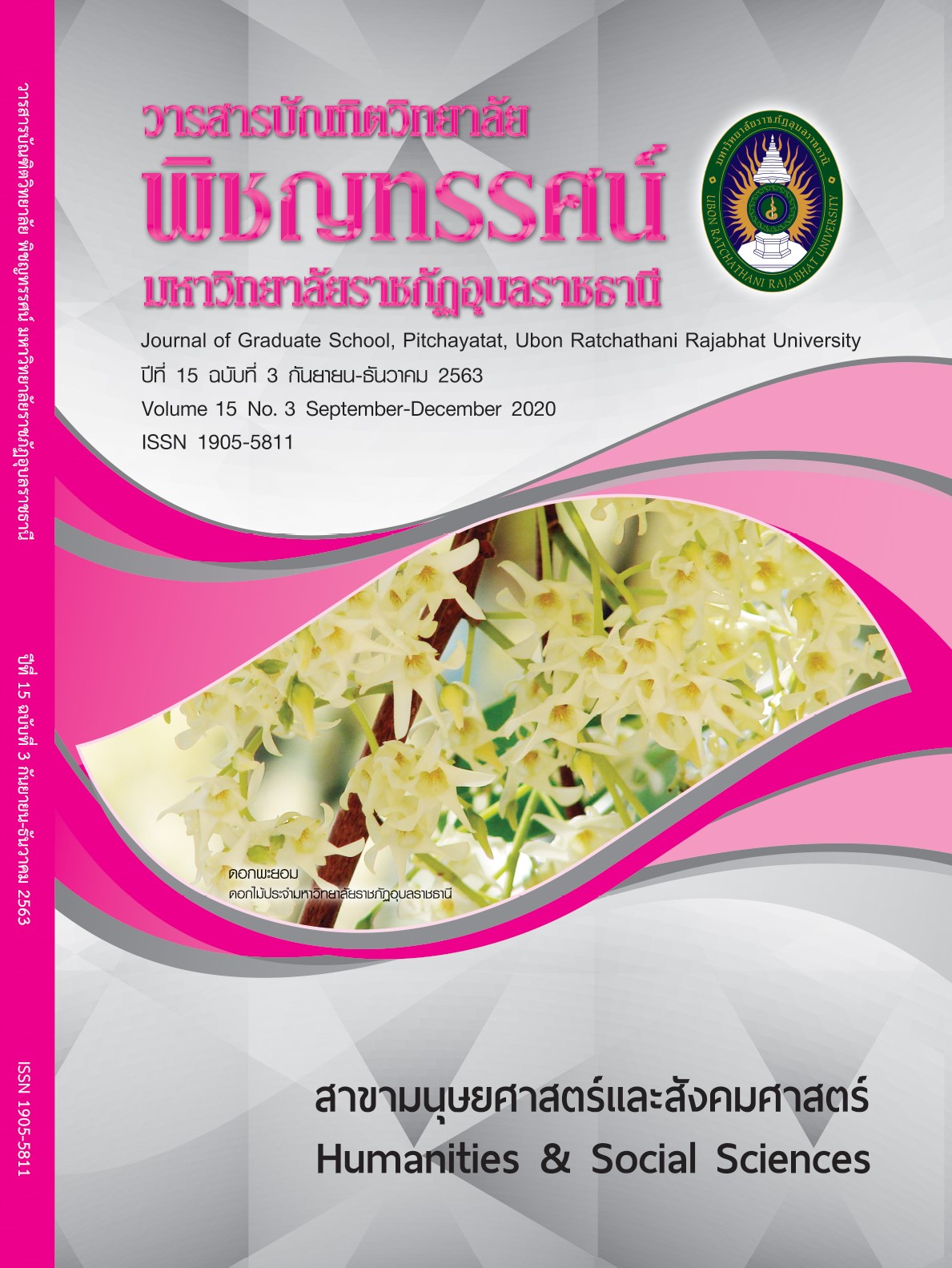An Appropriate Model for Managing the Religious Cultural Tourism in the Temples in the Lower Isan Region
Keywords:
An Appropriate Model, Management, Cultural Tourism, ReligiousAbstract
The objective of this research was to study an appropriate model for managing the religious cultural tourism in the temples in the lower Isan region. This research was a qualitative research and was conducted by studying documents, concepts, theories, and related research papers. The data collection used in this field research were observation, interview, and focus group discussion from 79 participants. The data were analyzed and synthesized. The findings of the research were proposed in the descriptive presentation.
The research findings were found as follows.
The appropriate model for managing tourism the religious cultural tourism in the temples in the lower Isan region consisted of 3 components: planning, implementation, and evaluation as in the following details.
- The planning focused on 4 aspects. 1) In the personnel, the planning should be done together among the network group: the representatives of the households, the temples, the schools, and the communities. 2) In the budgets, the planning for spending money from the budgets should be done strictly and money from the budgets should be spent worthwhile. 3) In the materials, the planning in using the equipment and materials should be done based on using the equipment and materials worthwhile and the users should get the highest benefits from using the equipment and materials. 4) In the management, the planning for managing tourism should be done to develop the temples based on the policies and the religious cultural tourism standard indexes.
- The implementation focused on 4 aspects. 1) In the personnel, each person should be assigned the work based on his/her ability, and the responsibility on his/her work should be clear. 2) In the budgets, the personnel should spend the budgets honestly and have knowledge in accounting and laws. 3) In the equipment and materials, the equipment and materials should be used worthwhile, and some personnel should be assigned to maintain the equipment and materials directly, the residents in the community should participate in maintaining the equipment and materials and use information technology. 4) In the management, the management should be systematic, working should be in the integrated form, and the tourism activities should be various.
- The evaluation focused on 4 aspects. 1) In the personnel, the evaluation of the personnel’s works should be done every period. 2) In the budgets, the financial reports should be informed to all divisions clearly, and they could be checkable. 3) In the equipment and materials, the equipment and materials should be checked to find whether they damaged in every period continually. 4) In the management, the evaluation of the results of the religious cultural tourism methods in the temples should be done systematically and cover all of the tourism models, tourism attractions, and tourism activities.
References
พระมหาสุทิตย์ อาภากโร (อบอุ่น) และคณะ. รูปแบบการพัฒนาแหล่งท่องเที่ยวประเภทวัดในกรุงเทพมหานคร. รายงานการวิจัยคณะพุทธศาสตร์ มหาวิทยาลัยมหาจุฬาลงกรณราชวิทยาลัย, 2552.
ภัชรบถ ฤทธิ์เต็ม. “รูปแบบการจัดการท่องเที่ยวเชิงศาสนาและวัฒนธรรมในวัด,” วารสารศิลปศาสตร์ มหาวิทยาลัยอุบลราชธานี. 11, 1 (มกราคม-มิถุนายน 2558): 1-23.
สํานักงานคณะกรรมการการศึกษาแห่งชาติ, สำนักนายกรัฐมนตรี. แผนการศึกษาแห่งชาติ พ.ศ. 2545-2549. กรุงเทพฯ: พริกหวาน กราฟฟิก จำกัด, 2545.
สำนักพัฒนาคุณธรรมจริยธรรม กรมการศาสนา. แนวทางการดำเนินงานโครงการส่งเสริมการท่องเที่ยวเส้นทางแสวงบุญในมิติทางศาสนาปี 2547. กรุงเทพฯ: ม.ป.พ., 2547.
Downloads
Published
How to Cite
Issue
Section
License
Every article is peer-reviewed for academic correctness by at least two external qualified experts. The opinions in the Journal of Graduate School, Pitchayatat, Ubon Ratchathani Rajabhat University (Humanities and Social Sciences) belong to the authors; not belong to the Publisher. Thus, Graduate School of Ubon Ratchathani Rajabhat University cannot to be held responsible for them. The articles in this journal are protected by the copyright of Thailand. No part of each issue may be reproduced for dissemination without written permission from the publisher.






